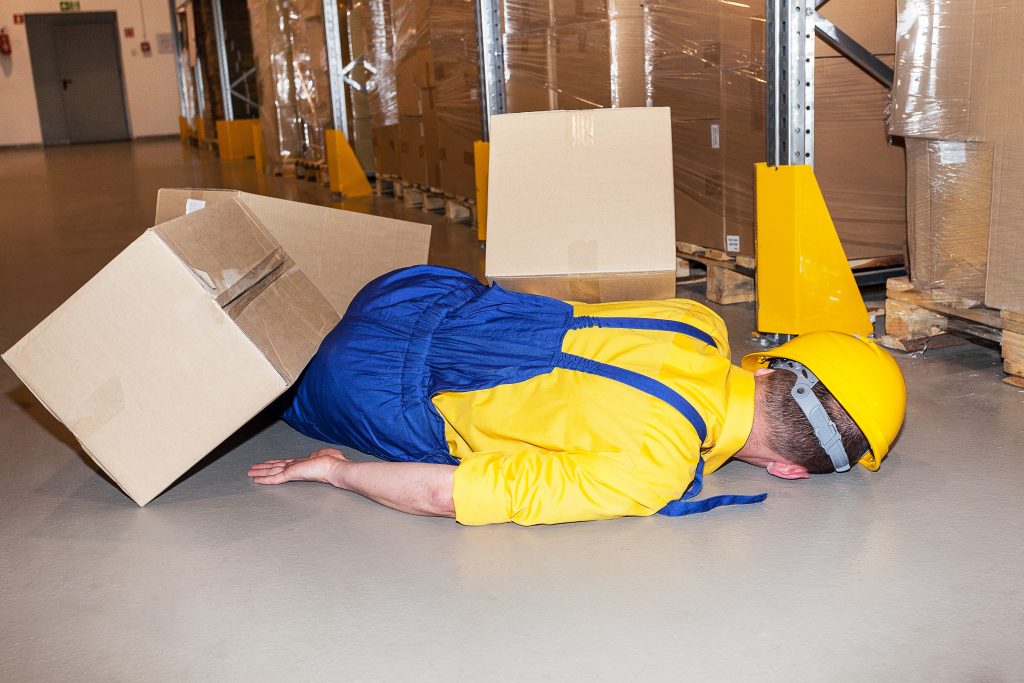
When it comes to supply chains, there is no downtime. People are loading and unloading products, stocking shelves, picking products for orders, loading delivery vehicles, and driving shipments to their destinations. Often, the hectic pace to pick, pack and ship orders can lead to cutting corners that can risk your workers’ safety and health.
No one wants to get the call that a workplace accident has occurred. However, accidents can happen at a moment’s notice in the warehousing and logistics industries. In 2019, 913 accidents happened in this industry sector alone. While remediation policies may prevent further problems from occurring, improving overall workplace safety can help minimize the chances of accidents in the first place.
Creating a safety-first culture could help reinforce safety and health protocols throughout your operations. In this article, we will discuss several ways to improve workplace safety in warehouse environments, when workers are on the road, and when your employees are performing other logistical tasks.
Offer Continuous Safety Training
Safety training should not be reserved only for new hires, and classes should never be one and done; training should involve new hires and veterans on a continuous basis. Workers may forget previous safety training, and refresher courses can help everyone on the team understand their role in maintaining a safe environment. In addition, operations change over time, as you may have new equipment or additional processes. Continued learning allows workers to understand any new safety protocols and policies that should be implemented.
Promote Communication During Safety Audits
Safety audits allow your supervisors to inspect the facilities and locate possible health and safety issues, so they can be addressed in a timely manner. However, a supervisor may not spot every hazard at first glance. Worker input regarding possible dangers is vital for these situations. Yet, many workers actively avoid saying anything during an audit, as they often feel that the company could punish or retaliate against them if they bring up a shortcoming in operations.
It becomes the job of the CEO and supervisor to reassure workers that pointing out and addressing possible dangers is necessary to maintain workplace safety. You must reassure workers that there will not be any type of demotion, loss of work hours, firing or hostile interactions from higher-ups if the workers speak out about a hazard. Accountability falls on everyone to maintain a safe work environment, and it also means that supervisors and CEOs should listen to and take complaints seriously when the topics are brought up to higher management.
Provide the Tools and Resources That Workers Need
Even with safety training and audits, if workers do not have the protective equipment or safe vehicles available to improve workplace safety, accidents will still occur. Workers should have all the personal protective equipment available for their industry, and supervisors should wear the equipment and act as safety role models when out on the floor.
In addition, warehouses should also have safety equipment available for the work floor — including signs and alarms — to be used on a daily basis. All materials handling equipment and fleet vehicles should undergo scheduled maintenance and repairs to make sure everything is in proper working order. Supervisors should pull any malfunctioning equipment out of operations, instead of forcing workers to continue using it just to get one more shipment out the loading dock doors.
People Are the Priority
Yes, time equals profits in the logistics industry; shipments are on tight schedules and need to reach their destinations. However, companies should never put workplace safety on the back burner — not only would that cost time and money, but it could also cost your reputation and your workforce. Improving workplace safety protects your most important assets: your people.
AUTHOR BIO: Jay Catlin is CEO at AMS Fulfillment, a leading order fulfillment company servicing B2B and B2C clients nationwide. Catlin has been with the company since 2002 and helped grow AMS into the successful third-party fulfillment entity it is today.
